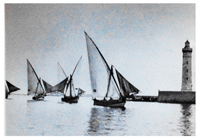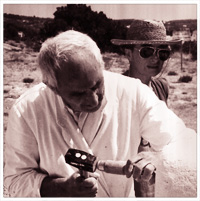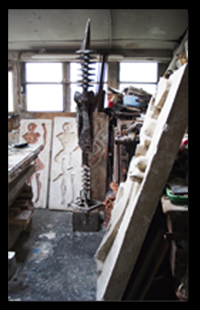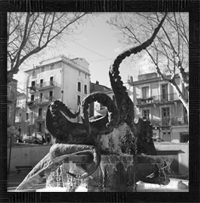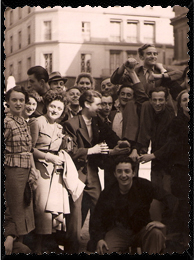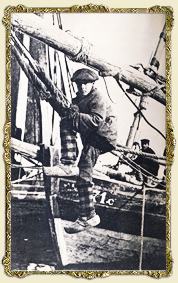
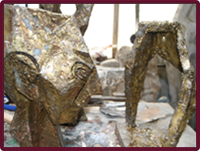
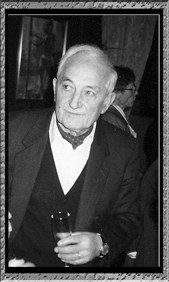
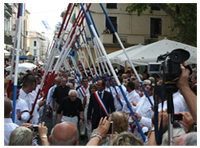


français english deutsch
life
story
biography
work
image galleries
life
monuments
opus
les bifaces
le poufre
other works
story
Pierre Nocca was born on the 27th of August 1919. A descendant of Italian immigrants, he spent much of his childhood on his father and uncle’s fishing boats down at the "Quai de la Marine". His father thought it would be good for him to become a fisherman and, at 13, Pierre Nocca went aboard ship as a cabin boy. Yet ultimately his passion for painting called him away from the sea.
He began his work in the studio of a master painter in Sète, where he practiced his craft producing maritime scenes. Impressed by young Pierre’s talents, the master encouraged him to enroll at the Ecole des Beaux Arts in Montpellier where he showed such skill that he was able to transfer to the illustrious Ecole Nationale des Beaux Arts in Paris.
In 1939 his Professor Henri Bouchard assured Nocca that would receive the Prix de Rome for his marble sculpture “Appolon”, but his path to Rome was derailed and he went off to war. In 1941 he returned to Paris, was decorated with the "Croix de Guerre" and joined the Résistance to help liberate Paris.
After the war, Pierre Nocca settled down in Saint Germain des Prés, near the Art Academy and built a studio in the renowned Parisian artist’s colony “La Ruche”. During this time he met with some of the most important artists of his time and was close friends with the sculptors César and Féraud. He was commissioned in 1947 to build the "Monument des Martyr de la Résistance", and in 1964 to create a monument in honor of Jean Jaures.
In 1957 his studio in Paris was demolished and he returned to his home in the south of France. There he worked prodigiously, practicing his craft and taking on further commissions. In addition to his active studio practice he lectured at the Ecole des Beaux Art in Sète from 1960 until 1985.
In 2010, in recognition of his life’s work, he was awarded the “Invité d’Honneur de la Saint Louis” by his hometown Sète. The illustrious award had previously been given to Roger Theron and has subsequently been given to Georges Brassens and Jean Vilar.
